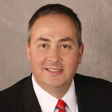How A Dollar Saved by Your Child Can Become Two Dollars Earned
Company 401(k) and similar retirement plans are great models for family savings plans, too.

You have undoubtedly heard of match.com and its ability to connect people. In this month’s article, I want to discuss a different “matching” connection and teachable moment for you and your children or grandchildren.
Most working Americans have seen or participated in retirement plans at a company that matched up to a certain level of a participant’s contributions. Many programs will match dollar for dollar on the first 3 percent you contribute -- and then 50 cents on the next 2 percent you contribute. Your contribution of 5 percent in your retirement account, plus the employer’s contribution of 4 percent, results in 9 percent of your income being saved.
The importance of this match is that it encourages a behavior -- saving -- and it rewards this action for the employee. The government encourages this type of matching program by making them "safe harbor" for the employer (less expensive to administer). The government knows they need individuals to save for their retirement, and this is a way to support the behavior.

Sign up for Kiplinger’s Free E-Newsletters
Profit and prosper with the best of expert advice on investing, taxes, retirement, personal finance and more - straight to your e-mail.
Profit and prosper with the best of expert advice - straight to your e-mail.
Parents, or even grandparents, would be wise to consider this type of matching program for their children as they try to encourage the behavior of saving for longer-term goals such as education, a first home, a vehicle, and retirement. Many of these may be things that you would fund a substantial portion of anyway, or would put money toward helping them down the road.
As a firm, we manage 40 retirement plans with thousands of participants. Each participant looks at their retirement account as something "they" have done for their future.
Would it not be a great outcome if we could instill a similar sense of confidence in our children? As they save for their future, they defer immediate gratification and learn the importance of saving toward longer-term goals?
We have matched our oldest son on "earned income." His income sources have come primarily from babysitting and working at a golf course for the past three years. We have "matched," dollar for dollar, any money that he has saved for college or for his investment account. One thing we found very interesting was the fact that he always wanted to work as many hours as he could get, even if it was in a minimum wage job, because it was no longer a minimum wage job for him -- an $8.25-an-hour job was now worth $16.50 an hour, because of our dollar-for-dollar match.
This is a wonderful way for a young adult to build their self-esteem and motivation toward investing and saving for longer-term goals. This also serves to help them understand the value of taking advantage of any matching program that a future employer may present. My wife and I planned on helping our son with college anyway. This approach has helped in guiding his contributions to a long-term goal, i.e. education, along with providing a systematic way for us to make our contributions. Both parties win and are happy with the outcome.
James D. Maher is CEO and Founder of Archford Capital Strategies, an independent wealth management firm with over $525M of Advisory Assets Under Management, located in the St. Louis metropolitan area. The proud father of four boys, he is committed to guiding them in building a solid financial foundation to serve them for the rest of their lives.
Get Kiplinger Today newsletter — free
Profit and prosper with the best of Kiplinger's advice on investing, taxes, retirement, personal finance and much more. Delivered daily. Enter your email in the box and click Sign Me Up.

-
 The AI Doctor Coming to Read Your Test Results
The AI Doctor Coming to Read Your Test ResultsThe Kiplinger Letter There’s big opportunity for AI tools that analyze CAT scans, MRIs and other medical images. But there are also big challenges that human clinicians and tech companies will have to overcome.
By John Miley Published
-
 The Best Places for LGBTQ People to Retire Abroad
The Best Places for LGBTQ People to Retire AbroadLGBTQ people can safely retire abroad, but they must know a country’s laws and level of support — going beyond the usual retirement considerations.
By Drew Limsky Published
-
 Home Insurance: How to Cut Costs Without Losing Coverage
Home Insurance: How to Cut Costs Without Losing CoverageNatural disasters are causing home insurance premiums to soar, but don't risk dropping your coverage completely when there are ways to keep costs down.
By Jared Elson, Investment Adviser Published
-
 Why Homeowners Insurance Has Gotten So Very Expensive
Why Homeowners Insurance Has Gotten So Very ExpensiveThe home insurance industry is seeing more frequent and bigger claims because of weather, wildfires and other natural disasters.
By Karl Susman, CPCU, LUTCF, CIC, CSFP, CFS, CPIA, AAI-M, PLCS Published
-
 Stick to the Plan: Don't Panic During Economic Uncertainty
Stick to the Plan: Don't Panic During Economic UncertaintyTake a breath and step back. Focus on a solid fiscal foundation to stabilize your investments during stock market volatility.
By Eric Lahaie, CFS®, RICP® Published
-
 How Inflation Affects Your Finances and How to Stay Ahead
How Inflation Affects Your Finances and How to Stay AheadThe cost of goods and services is certain to rise over time, making it essential to have a financial plan that will help you keep pace.
By Kyle D. Sikes Published
-
 Now's a Great Time to Become a Financial Adviser: Here's Why
Now's a Great Time to Become a Financial Adviser: Here's WhyThere's a growing need for financial advisers. Why not take on a role that offers earning potential and work-life balance and helps change lives?
By John Roberts Published
-
 His Employees Don't Work 'For' Him, But 'With' Him
His Employees Don't Work 'For' Him, But 'With' HimWhile it might not seem that way, there are indeed employers out there who value the relationships they have with their employees. Here's an example.
By H. Dennis Beaver, Esq. Published
-
 How to Balance Your Insurance Expectations vs the Reality
How to Balance Your Insurance Expectations vs the RealityJust because you have an insurance policy doesn't mean that you're totally covered in the event something bad happens.
By Karl Susman, CPCU, LUTCF, CIC, CSFP, CFS, CPIA, AAI-M, PLCS Published
-
 When Your Car Is Fixed, But You've Still Got the Problem
When Your Car Is Fixed, But You've Still Got the ProblemThis reader's experience with trying to get squealing brakes fixed under an extended warranty mirrors what others are experiencing these days.
By H. Dennis Beaver, Esq. Published